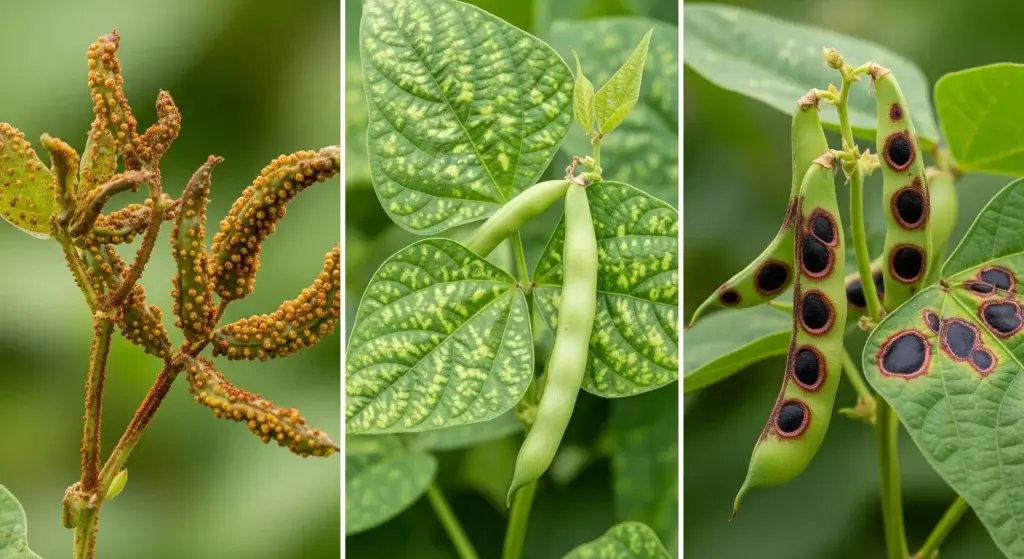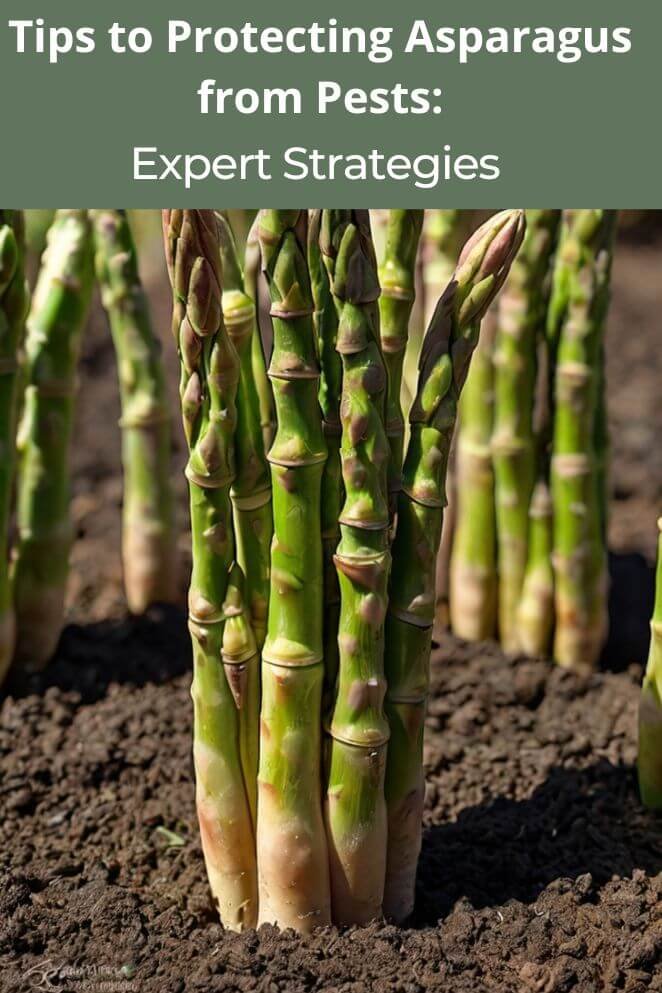
Asparagus can pump out tasty spears for up to 20 years—but only if you keep pests in check.
Bugs and diseases can wreck your harvest fast if you’re not on top of it.
This guide breaks down how to spot, stop, and treat common asparagus pests using both organic and standard methods.
Follow the steps, protect your plants, and keep those spears coming year after year.
Understanding Common Asparagus Pests
If you’re growing asparagus, don’t just watch the spears grow—watch what’s trying to eat them first.
These are the main pests you need to deal with if you want solid harvests year after year.
The asparagus beetle
This beetle is asparagus’s #1 enemy. It shows up right when your spears do in late spring.
- What it looks like: Metallic blue-black beetle, about ¼ inch long.
- What it does: Lays little black eggs on spear tips and young ferns. The eggs hatch into greenish grubs that chew like it’s a buffet.
- Damage signs:
- Spear tips get chewed up and scarred
- Ferns get stripped during summer
- Plants can’t photosynthesize well
- Less spear production next year
Let them stay too long, and they’ll weaken the whole plant over time.
Spotted asparagus beetle
Not as aggressive as its cousin, but still a problem—especially for asparagus berries.
- What it looks like: Orange-red beetle with 12 black spots (fancy but annoying)
- What it does: Attacks berries and seeds, sometimes nibbles on spears and leaves
- Why it matters: It can reduce seed production if you’re saving seeds and still stresses out the plant
Cutworms and their underground assault
These are caterpillars that hang out in the soil and come out at night to do damage.
- What they do: Chop off young spears at the soil line—yes, like little plant assassins
- Why it’s hard to stop: They hide during the day, so you might not even know they’re there until the damage is done
You’ll wake up one morning and your spear tips are just… gone.
Aphids
These small blue-green insects don’t chew—they suck.
- What they do: Cluster on asparagus ferns during summer and suck the sap out
- Bonus bad news: They can also spread viruses
- What to watch for: Curling, yellowing ferns and sticky residue on plants
Aphids won’t take your crop overnight, but they’ll slowly drain energy from your plants—and that’s bad news for next season’s spears.
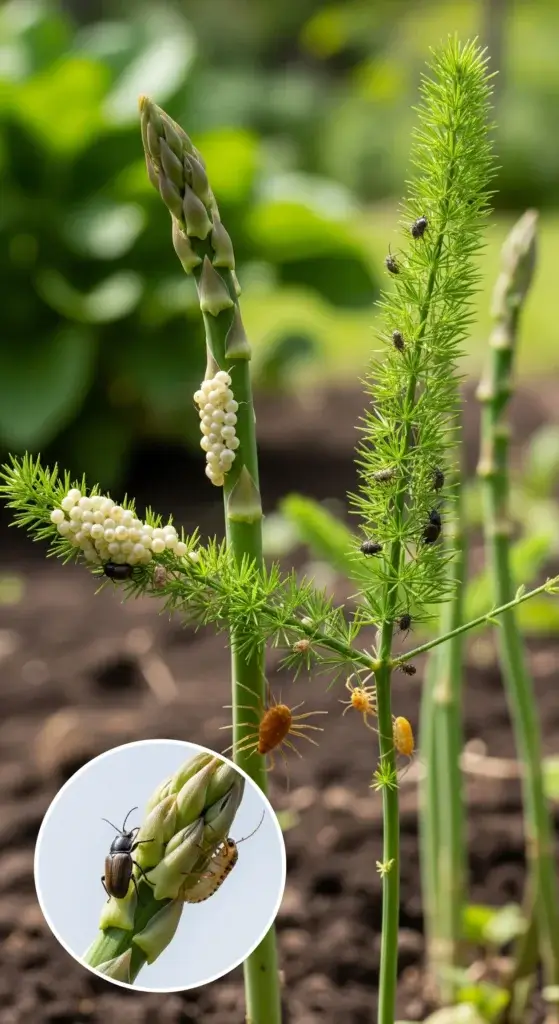
Integrated Pest Management Strategies
Cultural control methods
Before you grab the spray bottle, start with good habits.
These cultural control methods make it harder for pests to take over your asparagus bed in the first place.
Prep the bed right
Strong plants fight off bugs better. That starts with the soil.
- What it needs: Well-drained soil, rich in compost, with a pH between 6.5 and 7.5
- Why it matters: Healthy plants grow faster and can handle more pest pressure
- Bonus move: Weed regularly. Weeds give bugs places to hide and lay eggs. No free rent.
Harvest timing and technique
How you cut spears can change how many beetles show up.
- Cut at soil level: Clean cuts stop stubby leftover spears that beetles love to lay eggs on
- Go a little longer: Keep harvesting for an extra 1–2 weeks—this helps mess up beetle breeding cycles without hurting plant health
Clean up in fall
A lazy cleanup gives pests a cozy winter home. Don’t be that gardener.
- Toss the dead stuff: Pull out old ferns, dropped berries, and any plant debris
- Hot compost it: If you compost it, make sure it hits 140°F+ to kill off beetle eggs and larvae
Biological Control Options
Beneficial insect
Some bugs are on your side. Help them, and they’ll help you.
- Ladybugs + Lacewings: They munch aphids and tiny beetle larvae like snacks.
- Parasitic Wasps: These guys lay eggs inside asparagus beetle eggs. Brutal. Effective.
- Ground Beetles: They crawl around at night eating cutworms and beetle pupae.
- Spiders: Not just creepy—they trap flying beetles too.
Pro tip: Plant flowers near your asparagus bed—stuff like dill, alyssum, and yarrow.
It gives these bug heroes a hangout spot and keeps them close by.
Nematode applications
Cutworms hide in soil. You won’t see them, but beneficial nematodes will.
- What they are: Microscopic roundworms that attack cutworms and beetle pupae underground
- How to use them:
- Water the soil
- Apply nematodes in the evening (temps under 85°F)
- Chill—they work for 2–4 weeks
They won’t hurt you, your pets, or your helpful bugs. It’s like sending in secret agents that only go after the enemy.
Organic Treatment Methods
Forget chemical sprays—there are safer, smarter ways to deal with pests in your beet patch.
Here’s how to fight back using stuff that’s organic and garden-friendly:
Diatomaceous Earth
Sprinkle food-grade diatomaceous earth on dry leaves and soil.
It’s a fine powder that slices up soft-bodied bugs (like beetles and slugs) without harming pets, birds, or you.
Just reapply after it rains or when you water—moisture messes with its magic.
Neem oil
Neem oil messes with how bugs eat, grow, and make more bugs.
Mix 2 tablespoons of pure neem oil with a gallon of water. Add a few drops of dish soap so it blends.
Spray it in the evening when it’s cooler to avoid leaf burn. It smells weird, but it works.
Bacillus thuringiensis (Bt)
Bt (aka Bacillus thuringiensis) is a natural bacteria that only takes out caterpillar pests like cutworms.
It won’t hurt ladybugs, bees, or other garden good guys. Just spray it during the time cutworms are actively feeding and follow the label.
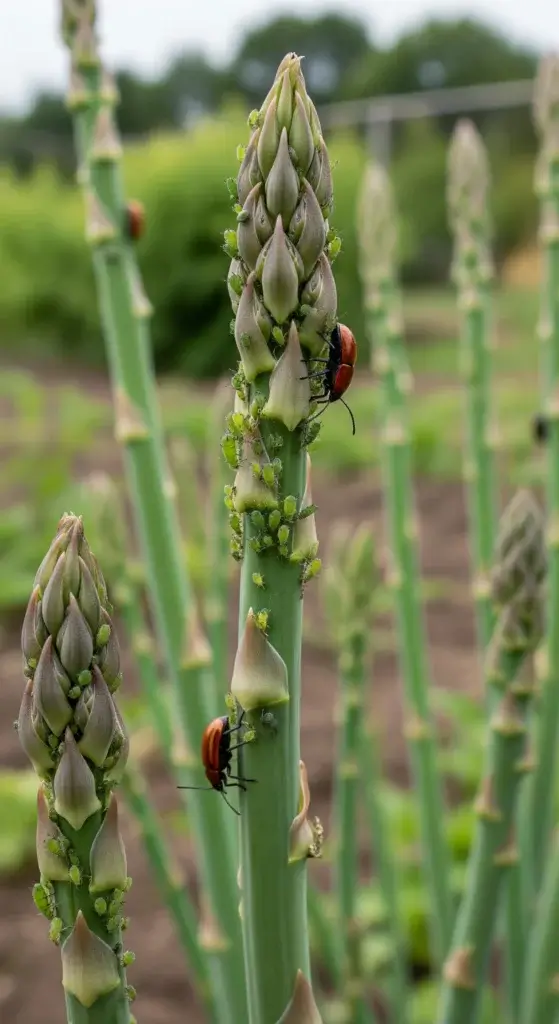
Physical Protection Strategies
Sometimes, the best way to stop pests is to physically keep them out or throw them off their game.
Here’s how to protect your beetroot patch without chemicals:
Use row covers
Right after harvest, toss on some lightweight row covers to block adult beetles from laying eggs.
Leave them on until your good bugs (like ladybugs) show up.
Just make sure there’s airflow under the cover—too much heat or moisture can mess things up and cause fungus drama.
Companion planting
Plant certain herbs and flowers with your beets to confuse or trap beetles:
- Basil + Parsley: Their strong smell helps keep beetles away.
- Marigolds + Nasturtiums: Trap crops—pests love them more than your beets.
- Chives + Garlic: Natural bug repellents and fungus fighters.
- Tomatoes: Their scent can bother beetles too.
Pro tip: Plant them in rows or around the edges for full coverage.
Mulching
Add 3–4 inches of mulch around your beet plants to block pests and lock in soil moisture.
But keep a 6-inch gap around young plants so they can breathe. Use stuff like:
- Aged compost: Feeds the soil while blocking bugs.
- Straw: Great for keeping weeds down.
- Shredded hardwood: Breaks down slowly—good long-term option.
- Grass clippings: Use thin layers only, or it turns funky.
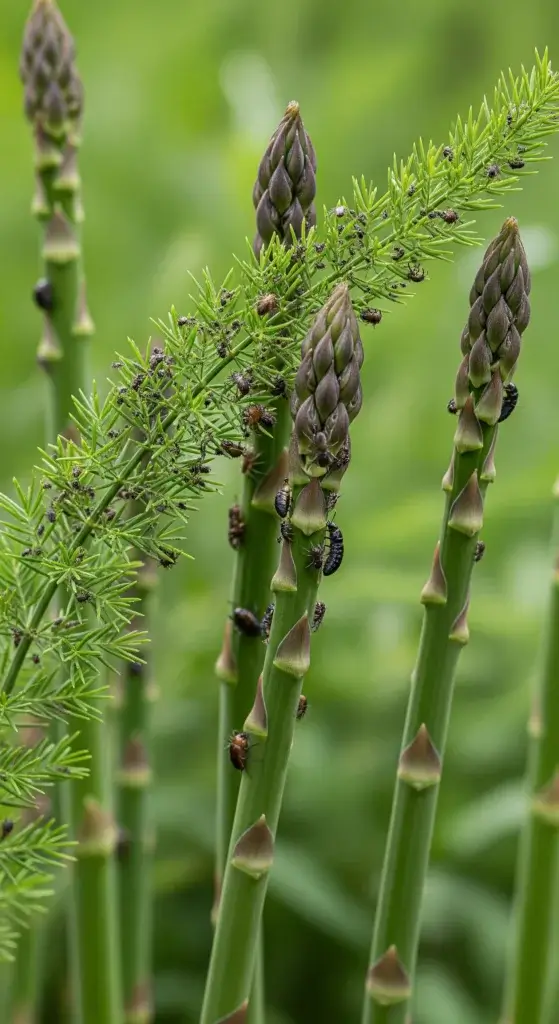
Conventional Control Options
Sometimes the bugs don’t back down, and you’ve tried all the organic tricks.
That’s when insecticides come into play—but only the right ones, used the right way.
Here’s how to go full defense without wrecking your garden (or dinner).
Use targeted insecticides
If pests won’t quit, grab an insecticide made just for asparagus. Don’t go spraying random stuff.
Stick to the label and follow directions like your crop depends on it—because it does.
- Pyrethroids: These hit adult beetles hard but wear off pretty fast. Spray in the evening when bees and other good bugs are asleep.
- Systemic options: These work from the inside, stopping sap-sucking pests like aphids. Just be super careful—bad timing can leave residue on your asparagus spears.
Application Timing and Safety
Don’t spray right before harvest. Seriously.
Every product has a “don’t-touch-it-for-X-days” rule (called a pre-harvest interval).
Follow it or you’ll mess up your crop. Aim for post-harvest spraying—hit the fern growth when bugs are active and spears are out of the danger zone.
Final Thoughts: Keep Your Asparagus Safe and Thriving
Beating asparagus pests takes a mix of smart habits and good timing. Prep your soil, feed your plants right, and stay on top of watering.
Healthy plants fight back better.
Use a combo of pest strategies—cultural, biological, and organic—to stay ahead.
Watch for early signs, know your bugs, and act fast when they show up.
Pest control isn’t one-and-done. Stick with it. Be patient. Keep learning.
If you do, your asparagus bed will reward you with fresh, tasty spears for years to come.



